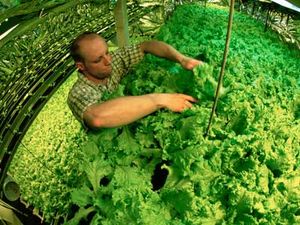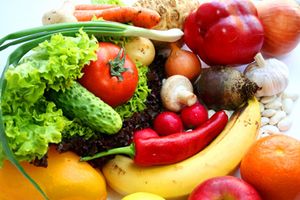Goals of Sustainable Agriculture
The definition of sustainable agriculture is hard to pin down. It is both a philosophy and a set of concrete farming practices. Although practiced by conscientious and prosperous farmers since day one, the term sustainable agriculture didn't come into widespread use until the 1980s. In the 1990 Farm Bill, Congress proposed a definition of sustainable agriculture as an "integrated system of plant and animal practices" that work toward the following overarching goals:
- Satisfy human food and clothing (cotton, wool, leather) needs
- Enhance environmental quality and natural resources
- Use nonrenewable resources more efficiently
- Take better advantage of on-farm resources
- Employ natural and biological controls for pests and disease
- Sustain the economic viability of farming
- Enhance the quality of life of farmers and society as a whole [source: Gold]
If there is a single overarching goal in sustainable agriculture, it is to work with natural processes rather than against them [source: McRae]. Let's use soil fertility as an example: In nature, the soil is fed by the slow decomposition of organic matter in the form of dead plants, dead animals and animal droppings. Natural soils are also home to a broad diversity of plant life that has evolved natural resistance to common diseases and pests. A naturally fertile soil is also rich with beneficial insects and microbial life that repel pests and cycle nutrients back into the earth.
Advertisement
Sustainable agriculture doesn't ask farmers to let their fields run wild, but to simply learn from nature's bag of tricks. For example, farmers can increase the organic matter content of their soils -- thereby improving soil texture and water-holding capacity -- by plowing in compost each fall. In a diverse and well-planned farm operation, the farm's own cows and horses can provide sufficient manure for composting. Farmers can also mimic nature by planting disease-resistant varieties of crops and using companion plants to attract beneficial insects that ward off invasive pests.
It is this goal of following natural processes that has fueled the organic farming movement, a subset of sustainable agriculture. In organic farming, no chemical fertilizers, herbicides or pesticides are applied to the soil or crops and animals are raised in more natural settings, often freely grazing on their natural diet rather than confined to pens and fattened with corn.
Some farmers and food activists believe the definition of sustainable agriculture should go even further. For them, the goal is not only to minimize environmental degradation, but to improve the land and the health of the broader ecosystem [source: Gerber].
On the next page, we'll outline a few of the main components of sustainable agriculture and what differentiates them from conventional or industrial farming.











